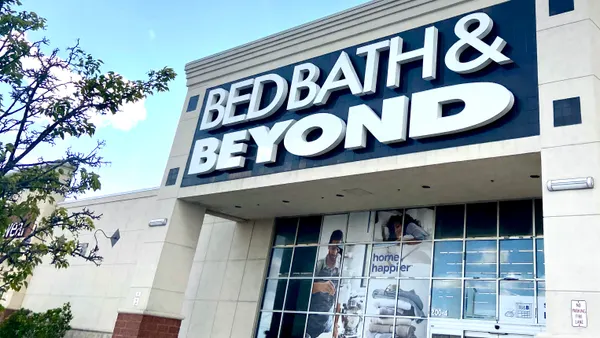Dive Brief:
- A new study from Profitero finds that Walmart is closing the price gap with Amazon on grocery products. There is now only a 1.8% difference between the two, with Target and Walmart-owned Jet.com trailing Amazon by about 6%, according to a press release.
- Aggressive price matching is helping Walmart bear down. The retailer matched Amazon prices on 53% of all consumer packaged goods products in the study and 67% of grocery products. Profitero's study examined 21,000 products across the grocery, beauty and household supplies categories.
- The Amazon Price Pantry program is helping the e-tailer maintain price separation from its competitors, with Pantry product pricing averaging about 11% less than other retailers.
Dive Insight:
Never count Walmart out on pricing. Traditional supermarket chains have found that out the hard way through the years, and now it appears that Amazon might be learning the same lesson.
The mega-retailer is well known for squeezing its suppliers in order to bring down prices. Recently, Walmart instituted fines for shipments that come into its distribution centers too late, or too early. Since the retailer announced the policy, known as "on time and in full," or OTIF, manufacturers have been scrambling to update their systems.
Although these sorts of policies are tough on supply partners, they're clearly getting results. Amazon maintains a 10% average price advantage over other retailers, but the gap between the e-tailer and Walmart is narrowing, and on grocery products the two companies are nearly neck and neck. In its report, Profitero noted that CPG product pricing has become a battleground for numerous retailers in their fight against Amazon, but that Walmart's price matching on 67% of grocery items was far higher than any other company.
"Amazon still reigns as the low-price leader online, but it’s evident that Walmart is making grocery a key battleground for challenging that leadership," said Keith Anderson, senior vice president of strategy and insights at Profitero in the press release. "Our latest study confirms that price gaps in online grocery are much narrower than what we found to be the case across other non-grocery categories. Walmart is clearly positioning to win shopper loyalty through aggressive pricing on everyday household essentials."
A key differentiator for Walmart has been the rapid growth of its curbside pickup program. The retailer now offers the free service at more than 1,000 stores, and plans to double that availability this year. That advantage will erode somewhat as other retailers introduce home delivery and pickup programs. Amazon's Prime Now delivery from Whole Foods stores, currently available in four markets and set to expand nationwide, will turn up the pressure on Walmart. However, Walmart's massive scale — it operates nearly 5,000 stores across the country, and close to 90% of the U.S. population lives within ten miles of a store — will continue to make it a tough competitor.
Walmart’s success in e-commerce grocery has come under scrutiny recently following fourth quarter earnings that showed online sales growth was significantly less than previous quarters. The 23% increase during the period paled in comparison to the 50% bump in the third quarter and 60% in the second quarter. Grocery margins also declined, which is directly related to its price war with Amazon. But it’s clear that Walmart is strongly committed to online sales for both its Walmart.com platform and its Jet.com subsidiary, which operates separately.
Competition for online grocery dollars is fierce, but companies will be hard-pressed to catch Amazon and Walmart. Both giants possess scale and investment capital that put them in a category unto themselves. As both companies race to leverage their physical and online assets, they will drive innovation — and pricing — for the rest of the industry.













